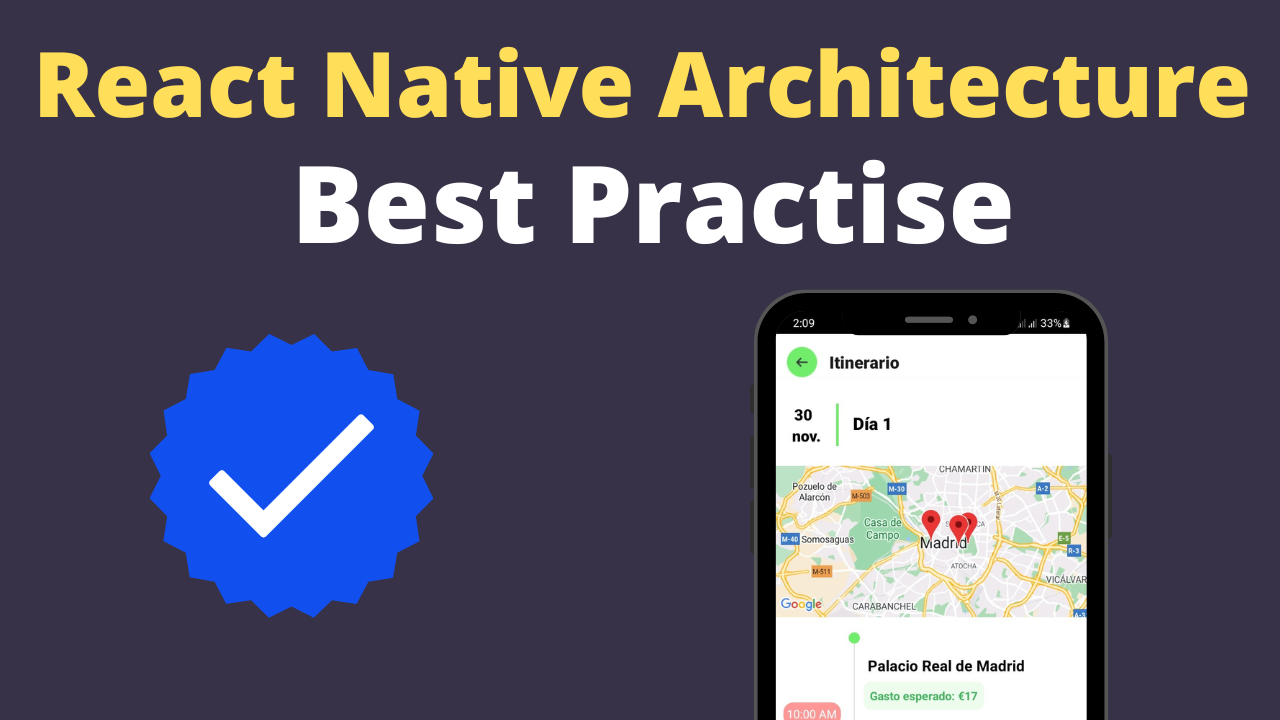Creating a React Native app that’s scalable, maintainable, and high-performance requires more than just understanding the framework—it demands a strategic approach to architecture. This guide offers an in-depth exploration of various architectural patterns suitable for React Native, their pros and cons, and practical advice on selecting and implementing the right one for your project. We’ll cover common challenges, with actionable solutions, and provide a wealth of insights to elevate your app development process.
Understanding Architecture Patterns in React Native
Architecture patterns play a crucial role in shaping the structure of your app, influencing everything from scalability to testability. Let’s dive into some of the most popular patterns, their strengths, weaknesses, and when to use them.
MVVM (Model-View-ViewModel)
Strengths: MVVM facilitates a clear separation of concerns by decoupling the UI (View) from the business logic (ViewModel), leading to more manageable and testable code.
Weaknesses: It can introduce complexity, especially for small projects where such a level of abstraction might not be necessary.
Use Cases: MVVM is ideal for complex apps with dynamic interfaces that require frequent updates to the UI based on business logic changes.
MVP (Model-View-Presenter)
Strengths: Like MVVM, MVP supports separation of concerns but with a focus on user interaction, making it great for apps with complex input handling.
Weaknesses: The Presenter can become a bottleneck, growing overly complex in large applications.
Use Cases: MVP suits applications where the presentation layer is complex but does not require frequent updates from the model.
Flux/Redux
Strengths: Offers a unidirectional data flow, making state management predictable and easier to debug. Redux, a Flux implementation, is particularly popular in the React Native community.
Weaknesses: The boilerplate and verbosity can be overwhelming for small projects or beginners.
Use Cases: Best for large-scale applications with complex state management needs.
Clean Architecture
Strengths: Promotes separation of concerns to a high degree, with clearly defined layers that make the system more maintainable and adaptable to change.
Weaknesses: The initial setup and steep learning curve can be daunting.
Use Cases: Highly suitable for large, enterprise-level applications where scalability and flexibility are key.
Implementing Your Chosen Architecture
Decision-Making Criteria
- Project Size and Complexity: Smaller projects might benefit from simpler architectures, while complex applications may require more abstract patterns.
- Team Experience: Consider the familiarity of your development team with the chosen architecture to ensure productivity and quality.
- Future Maintenance: Opt for architectures that align with your capacity to maintain and scale the app in the future.
Real-World Scenarios and Pitfalls
- Scalability Challenges: As your app grows, a poorly chosen architecture can lead to significant refactoring. Opt for flexible patterns that accommodate growth.
- Performance Bottlenecks: Some patterns may introduce unnecessary re-renders or state updates. Pay attention to optimizing components and state management.
Enhancing Your Architecture Strategy
Testing and Debugging
Incorporate a testing strategy that aligns with your architecture. For instance, use Jest for unit testing and Detox for end-to-end testing. Debugging tools like Reactotron can be instrumental in tracing and fixing issues related to state management and performance.
Performance Optimization
Leverage code splitting, lazy loading, and optimized state management to enhance app performance. Profiling tools can help identify bottlenecks, while memoization and pure components prevent unnecessary re-renders.
Future Trends
Keep an eye on trends like server-side rendering for React Native, the growing popularity of hooks for state management, and the potential for AI-driven code generation to influence architecture choices.
Case Studies and Comparisons
Examining successful React Native apps, such as Facebook, Instagram, and Airbnb (prior to their move to native), reveals diverse architectural approaches. Facebook and Instagram leverage Flux-based patterns for predictable state management, while Airbnb utilized a combination of React Native with native modules, showcasing the flexibility of the framework to accommodate various architectural needs.
Conclusion
Selecting the right architecture for your React Native app is a foundational decision that impacts every aspect of development. By understanding the strengths and weaknesses of different patterns, considering your project’s specific needs, and applying best practices for performance and scalability, you can build a robust, maintainable, and efficient application. As React Native continues to evolve, staying informed about new trends and community practices will ensure your architecture remains effective and forward-looking.

